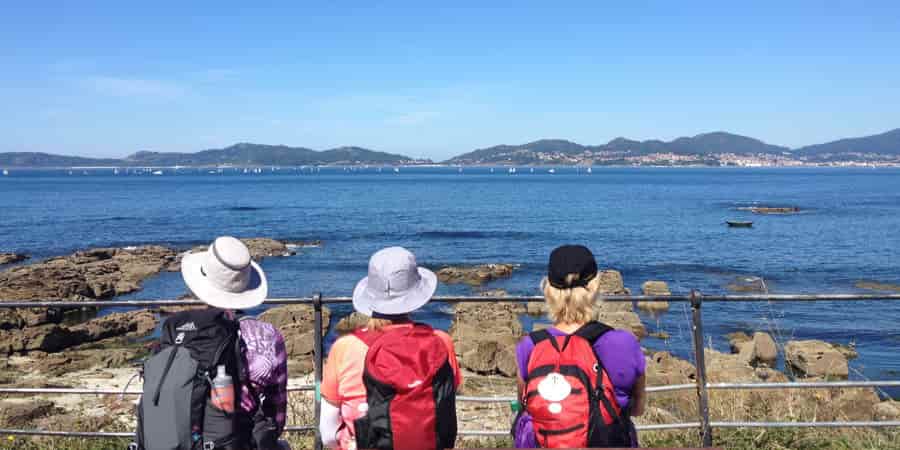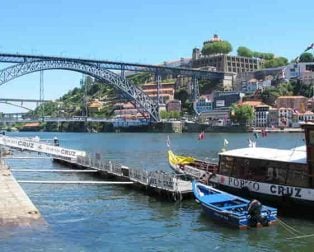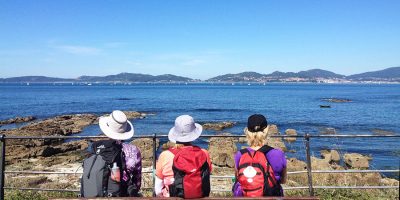When planning our trip to Galicia, my friends and I were unsure whether to bring rain gear or sun cream! As the forecast promised sunny and warm days, we thought of going to the beach to get that last taste of summer (yes, even at the end of October) before hitting the road to Santiago de Compostela.
So, along with the necessary cycling gear, we packed bikinis, sun cream, a hat, and sunglasses. We decided to embrace the sun and head off to the tropical paradise of Galicia: the Cies Islands.
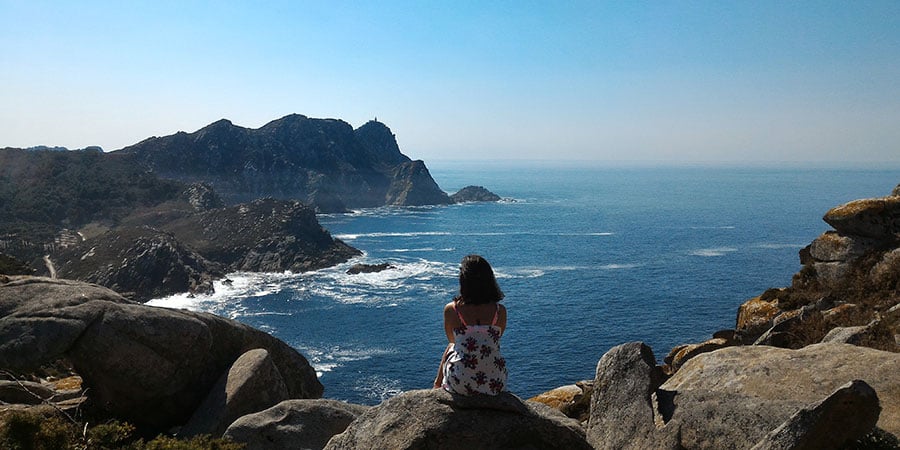
The Cies Islands are an archipelago consisting of three small islands: Monte Agudo, O Faro, and San Martiño. They are situated off Spain’s northwest coast, offering stunning natural beauty and unique landscapes. These islands are known for their unique landscapes, crystalline water, flora and wildlife.
The environment of the Cies Islands is protected as part of the Atlantic Islands National Park. To avoid contamination, there are no waste bins on the island, so if you visit and bring your own food or drinks, please take your litter away with you.
Also, to control visits to the islands and prevent too much environmental disruption, visitors must provide their ID or passport when booking. Bookings fill up quickly, especially during the summer, so plan ahead and secure your visit early.
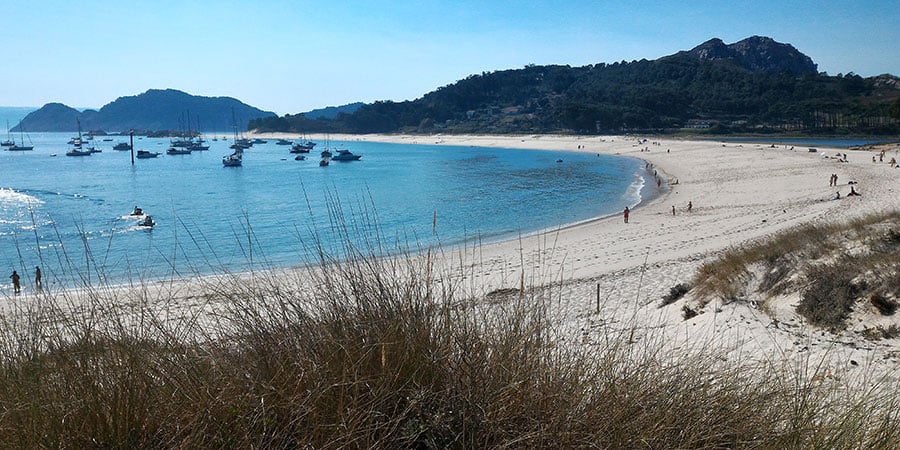
As mentioned, the crystalline water and the green flora make this archipelago one of the most amazing places in Europe. The Romans were definitively on to something when they called them ‘The Islands of the Gods’. In addition to the lush flora, it’s also possible to visit a pre-Roman settlement, take part in bird watching, and visit local lighthouses.
There are four walking trails on the island:
- Monte Faro Route: one of the longest routes and the most popular
- Porta Lighthouse Route: This is a less travelled route than others but with a view of the islands closer to the sea
- Monteagudo Route: ideal for visiting the bird observatory overlooking the ocean
- Alto do Principe Route: the shortest and easiest trail, boasting superb scenery
Since we had limited time and wanted to maximise our visit, we chose to take the shortest route. Needless to say, once we arrived at the top of our trail, the view was just breathtaking.
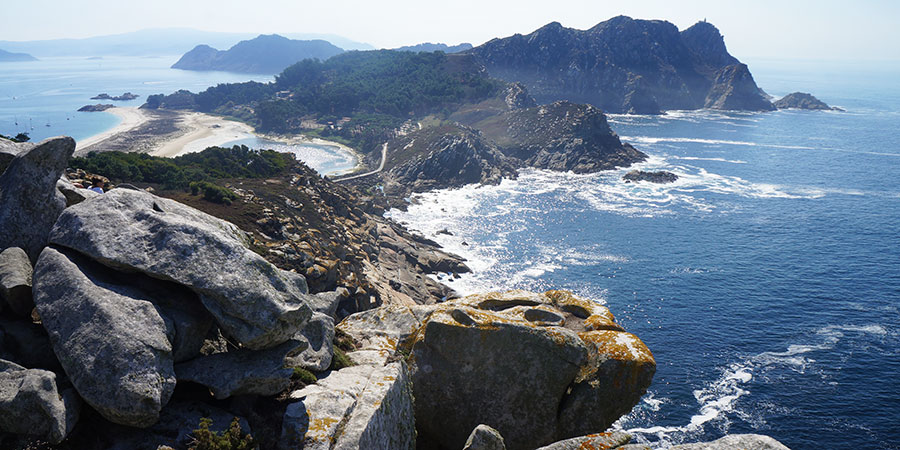
We sat and took in the steep and deep cliffs, wind-shaped rocks and bushes overlooking the southern part of the archipelago. The fresh breeze and warm sunshine created a perfect setting with vibrant colours. The sound of waves crashing on rocky shores was the absolute highlight of our visit.
On our descent from the trail, we stopped at one of the nicest beaches on the islands, A Praia das Figueiras. This beach attracts nudists, so expect to see some unclothed visitors during your visit!
How To Get To The Cies Islands
Getting to the Cies Islands is very easy. You take the ferry from Vigo Port or Baoina (summer only). In peak season, the journey costs approximately €25 return, and the ferry journey is 45-50 minutes. During off-peak season, tickets are €20.
You can book your visit 45 days ahead and cancel it up to 15 days before the scheduled date. To book your tickets, you must first request authorisation, and then you will have 2 hours to reserve your spot. For more information and to book your tickets, visit the islands’ official website Cies Islands.
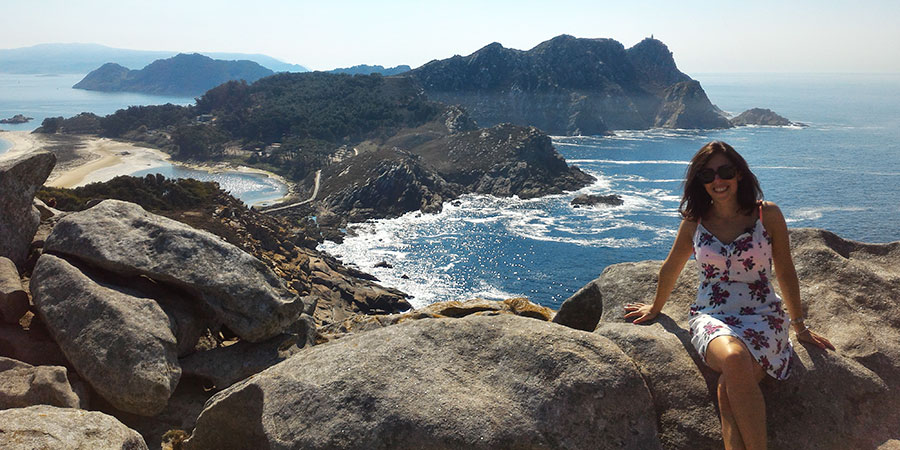
If you are walking the Portuguese coastal route, I would definitely recommend spending an extra night in Vigo to visit this amazing earthly heaven! For more information about the Camino Portugués and the Cies Islands, or to book your Camino trip, please don’t hesitate to contact us.
